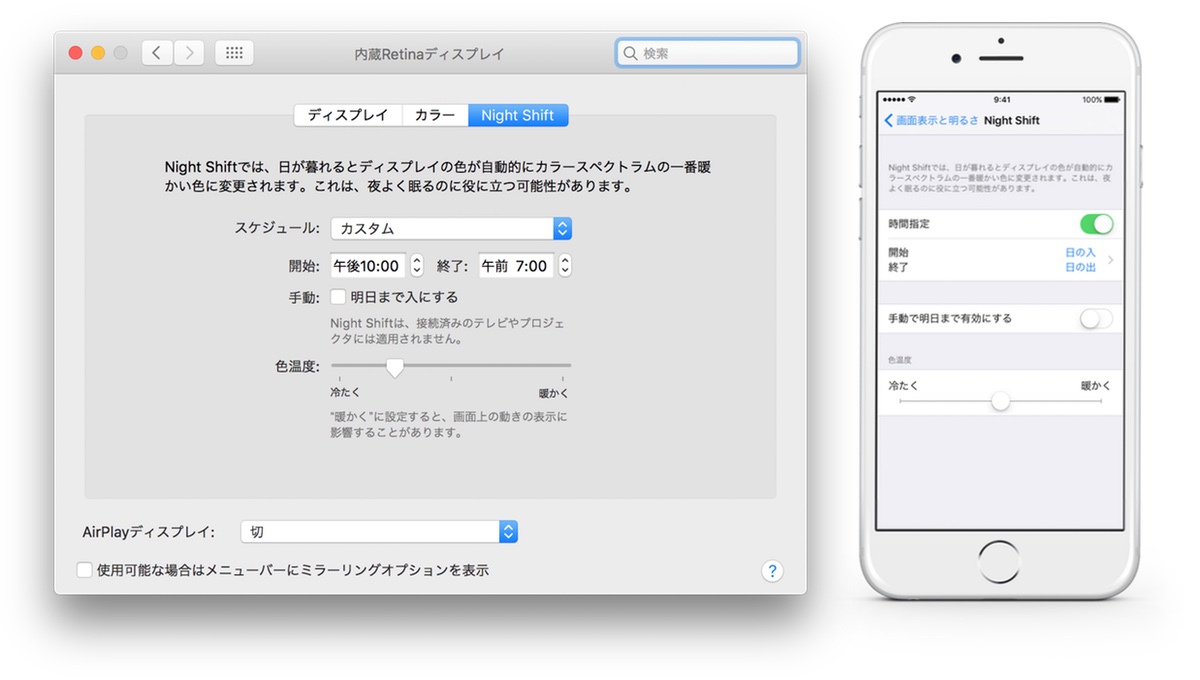
#Night shift for mac pro mac#
How much of a difference does it make? The three images below show my Mac display going from the coolest (bluish) color temperature on the left to the warmest (orangish) on the right, with an unadjusted iPad mini screen in front to show a somewhat exaggerated version of how Night Shift works. There’s a new tab for Night Shift (see image above), which can either be set up to automatically turn on between sunset and sunrise, or be manually adjusted. I’m testing macOS Sierra 10.12.4, and Night Shift is easy to set up from System Preferences > Displays.
#Night shift for mac pro update#
(New Night Shift pane in System Preferences > Displays)Īpple has solved the issue for iOS users, but what about the Mac? Fortunately, the next update to macOS Sierra (version 10.12.4) finally adds Night Shift to the Mac. Think of it as being what our eyes were used to seeing before all of these screens - mid-day is dominated by that cool blue, and in the early evening we see those warmer sunset tones, yellows and reds. What Night Shift does is shift the color temperature of an iPad or iPhone from the usual “cool” bluish tinge that’s caused by the backlighting of the display to a more “warm” orangish tone. In this hyper-connected world in which we live, that can be difficult, so Apple created Night Shift for iOS. Probably the most obvious way to keep this from happening to you is to simply stop using anything with a backlit electronic screen for at least an hour before you go to bed. One study by the National Institutes of Health showed that “exposing healthy subjects to 30 minutes of 500 lux polychromatic blue light an hour before bedtime, in their natural home environment, delayed the onset of rapid eye movement sleep by 30 minutes.”Ī joint study published in the Proceedings of the National Academy of Sciences concluded that “the use of these devices prolongs the time it takes to fall asleep, delays the circadian clock, suppresses levels of the sleep-promoting hormone melatonin, reduces the amount and delays the timing of REM sleep, and reduces alertness the following morning.”
#Night shift for mac pro how to#
In this article, I’ll talk about why working on your Mac during the evening hours might be making it difficult for you to get to sleep, and how to reduce the impact.Ĭomputer screens are particularly notorious for this displays tend to have a somewhat bluish tinge to them thanks to the backlighting used, and blue light is the worst culprit for delaying sleep. When the eyes detect light, the production of melatonin in the body is suppressed: that’s why sometimes you might find it hard to nod off after a long evening of web surfing or playing games on your Mac.

It’s all due to melatonin, a body-produced hormone that helps you get to sleep. The feature was added to iOS last year and will be included in macOS 10.12.4.)ĭid you know that your Mac can keep you awake at night? It’s true - research over the years has proven that light has a noticeable effect on brain function and in particular, sleep.


 0 kommentar(er)
0 kommentar(er)
